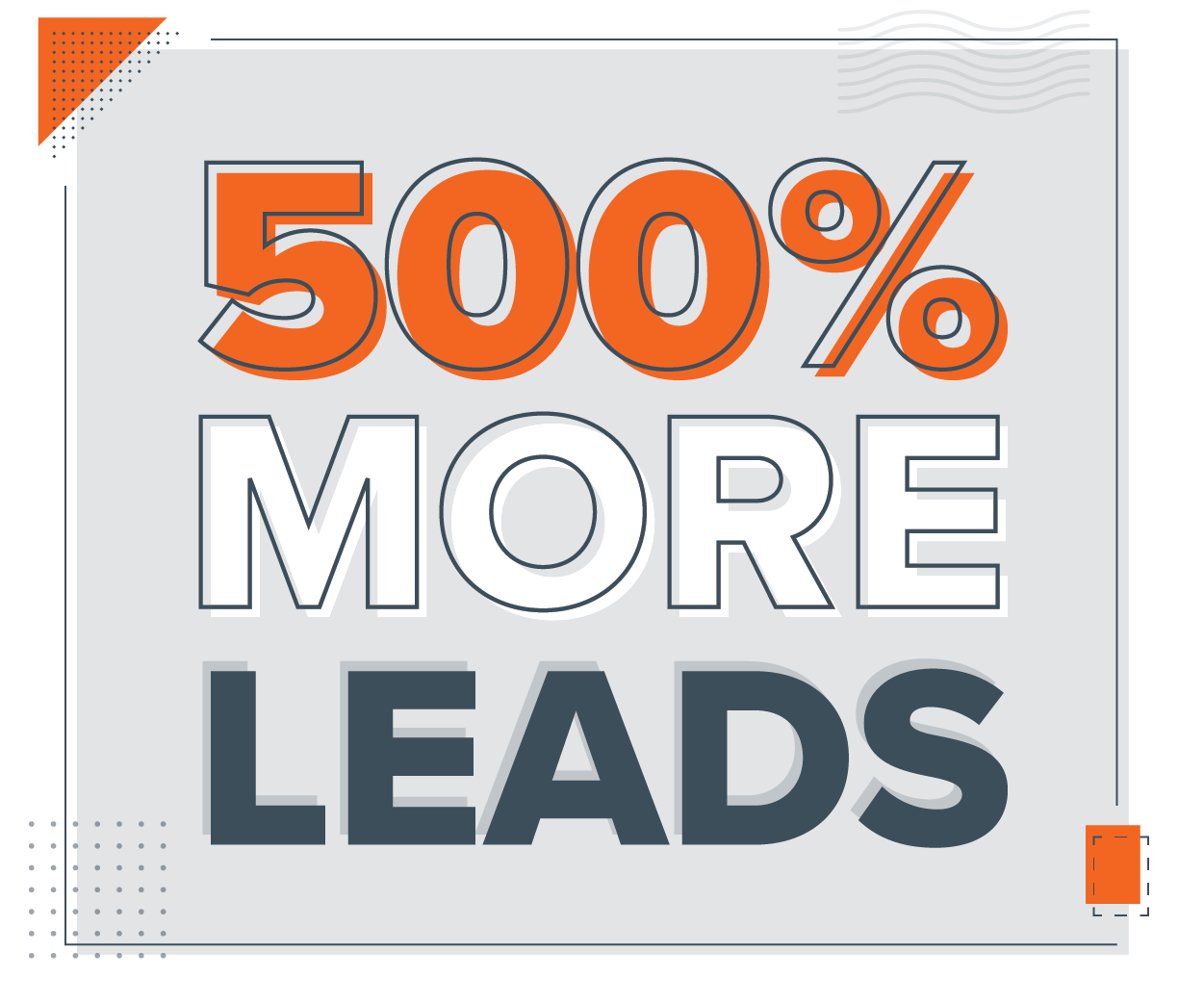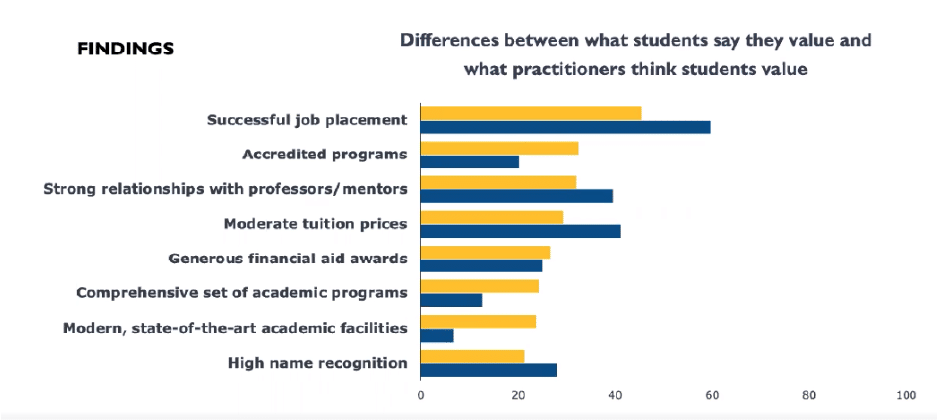Increasing Leads Without Increasing Spending
Spark451 has been partnering with a small public university and managing their digital media lead generation campaigns since 2018. For the first two and a half years of working together, the university mandated that we drive all inquiry traffic from our ads to an appealing, but standard, admissions inquiry page.
Due to the extremely small size of the institution, they were perfectly happy with the minimal results that emanated from these campaigns. However, the Spark451 team was very confident that we could improve the outcomes.

Launching a More Robust Site
We began suggesting a more effective solution to help the school significantly grow their prospect list. After more than a year of discussion, and a campaign launch in Fall 2020 that produced a grand total of 14 leads from September through December, our partner finally conceded. They took us up on our offer to build a campaign-specific landing page based on our industry best-practices approach, reallocating the budget for the remaining media spend to create a site that would make a greater impact on the audience.
We launched the new landing page in January 2021, utilizing powerful techniques for engaging students. Within one week, we had matched the total leads generated in four months on the prior page. The campaign just wrapped up, and the new page has produced 85 leads—a 500% increase in the same amount of time. And, since no additional money was spent, the cost per lead plummeted from more than $1,400 to just $250.
Expanding on Our Success
Our partner institution is thrilled with the changes we incorporated and with the improved results—which they had been convinced simply weren’t possible for them. We are preparing to begin a new targeted campaign this spring, and the first question they asked was whether we could create a version of our landing page specifically for this campaign, as well!
Let's Connect
We’d love to help you achieve a similar outcome. Reach out if you’re ready to discuss strategies and tactics we can implement to support your enrollment goals.
10 Takeaways From NAGAP 2021
As expected, the NAGAP 2021 Annual Conference took place online instead of its intended physical location in San Francisco, due to pandemic concerns. This didn’t stop the many passionate and dedicated graduate enrollment management professionals we affectionately call “GEMs” from sharing their experiences and challenges. And, suffice it to say, everyone expressed that it was “quite a year” as they walked a tightrope to make sure that students were receiving care and support that they needed, and that graduate enrollment was the revenue machine that college campuses needed to keep their enterprises afloat. We gained some new perspectives and enlightenment from graduate admissions colleagues, as well as from our Spark451 colleagues who hosted a webinar titled, “The Rise of Behavioral Analytics and Personas in Recruiting.”
1. Diversity, Equity, and Inclusion (DEI) is no longer just a movement. It’s an expectation.
Graduate enrollment managers are seeking new ways to provide access to graduate education for more students, but especially the underrepresented and people of color. One example of this trend is the use of holistic graduate admissions practices, as presented by Joseph Paris, EdD of Temple University. This involves the evaluation of the whole applicant, beyond typical GRE scores and GPA, to include attributes such as professionalism, concern for others, and multicultural competency. In a NAGAP survey, 95% of GEM professionals indicated a stated commitment to DEI from their institution was very or extremely important to them.
2. Domestic graduate enrollment saw an upside with the downturn in the economy.
Of GEM professionals responding to a NAGAP poll, 69% met or exceeded their enrollment goals for Fall 2020, with most of those opportunities being created online. GEM professionals reported using financial aid aggressively to increase headcount, given the current climate.
3. University administrators didn’t let the crisis go to waste.
As a result, underperforming graduate programs were targeted heavily, and 19% of GEM professionals reported the elimination of such programs.
4. Graduate enrollment management professionals are under pressure.
Budget cuts, layoffs, and financial instability at their institutions are sources of anxiety for many in the graduate admissions area. Moving ahead, uncertainty in the ability to recruit students is also a cause for concern. In fact, 45% of GEM professionals indicated that their working situation is very or extremely stressful.
5. We don’t always know what students value.
NAGAP survey findings also showed that what students say they value is often different than what GEM practitioners think they value. Practitioners tended to over-emphasize “successful job placement” and under-emphasize areas such as “accreditation” and “modern, state-of-the-art academic facilities.”

6. International enrollment remains a challenge.
In Fall 2020, the number of international student applications increased, but enrollment substantially decreased. Additionally, institutions reported that over 40,000 international students deferred to a future term. Travel advisories from the CDC and state-mandated restrictions all played a role in this trend. International graduate enrollment managers (iGEMS) will need to manage the situation carefully, bringing in students from abroad while balancing health risks and post-graduation opportunities.
7. Affordability and student debt loom large.
The vast majority of affordability and student debt discussions center around undergraduates, but the implications are enormous for graduate students, who owe a whopping $71,318 each, on average, with roughly 66% of that being directly from their graduate studies. In fact, graduate students borrow 37% of all federal student loan dollars. Institutions need to ensure that their students receive the appropriate value from their degrees to be able to repay those loans. Thankfully, the student loan default rate (at 9.7% for all students) is much lower for graduate borrowers.
8. Digital media has become a must-have marketing channel.
GEM professionals embraced digital marketing more than ever, with 60% indicating an increase in digital marketing spending over the last year. With its efficiency of targeting and trackable analytics, budget-challenged graduate admissions offices are embracing social media marketing, search engine marketing, and the full continuum of digital presence.
9. Graduate students value timely and personal outreach.
In our partner session with Element451, we discussed how we use personalization, behavioral targeting, and automation to create more timely and relevant communications. These techniques yielded a doubling of engagement rates from 40% to 80%. You can access the Spark451 NAGAP 2021 webinar, The Rise of Behavioral Analytics and Personas in Recruiting, here.
10. Virtual is nice, but in-person is what we seek.
The overall mood of the colleagues I spoke with was an appreciation for the convenience of the online conference, but an overwhelming preference to be in person at next year’s enrollment summit. So, with that… I’ll just say I hope to see you all in Chicago at NAGAP 2022 for some deep-dish pizza and a live, in-person experience.
To discuss more about the current state of graduate enrollment, or how Spark451 can help elevate your own recruitment practices, reach out to our team today!

